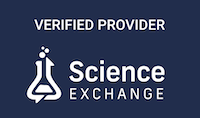European Calcified Tissue Society (ECTS) Annual Meeting was held in Helsinki, Finland on May 6-10, 2022. In the history of the society, this was the third time that the annual meeting was held in our home country, after 2000 in Tampere and 1980 in Helsinki. The annual meeting gathered basic and clinical researchers to meet in-person for the first time after 2019. OncoBone held an oral presentation in the pre-congress workshop and presented two posters in the event. This blog post summarized our work presented in the event.
Small-animal DXA for bone and metabolic studies
Dual X-ray Absorptiometry (DXA) is the gold-standard technique used in the diagnosis of osteoporosis in patients. During recent years DXA has gained more and more interest also in animal studies, and we wanted to highlight one new small-animal DXA system, iNSiGHT that OsteoSys introduced to the markets a few years ago. OncoBone is a distributor of iNSiGHT DXA in Europe. DXA is also ‘dual’ in this use-field as it can be used for analyzing bone (bone mineral density and content) and body composition (fat and lean mass) in small animals, therefore benefitting both bone and metabolic research in multi-user institutions such as universities.
OncoBone presented a poster in ECTS summarizing key advantages of iNSiGHT DXA over other commonly used imaging devices in bone and metabolic studies, listed in Table 1 below. DXA allows areal analysis of specific regions of interests (ROIs), which can be done quickly and easily multiple times during the study on anesthetized animals. These features were also greatly appreciated by many researchers we discussed with during ECTS. Supporting techniques such as detailed ex vivo µCT imaging of bone architecture can be done to complement the observations.

Predictive in vitro organ-on-chip model of osteoarthritis
OncoBone was invited to give an oral presentation on the pre-congress day workshop in an open forum on ‘osteoarthritis and bone’. The presentation titled: ‘A predictive human 3D cartilage-on-chip model for screening anti-osteoarthritis drugs and medical devices’ was selected based on an abstract that we submitted to the event. The work was done in collaboration with BiomimX, inventor of the used platform technology. The presentation showcased the problem that there has been no physiologically relevant in vitro models for OA, which has created a gap in early preclinical testing of novel anti-OA drugs. The key to produce biologically relevant OA models is to use an excess mechanical stimulus to induce OA-like disease to human cartilage micro-organs. OA development to micro-organs was detected by studying OA-related changes, including degradation of cartilage-related protein and induced inflammation. The developed model can be used to test effects of novel anti-OA drugs or medical devices, and the effects can be compared to standard-of-care compounds that produce a corresponding data obtained from animal studies.
The organ-on-chip model for OA, called uKnee, can be reliably used to address different needs in early drug development. The uKnee model can be used for example as a screening model for lead selection, for assisting in dose selection for animal studies, and for mode-of-action studies. Based on our discussions with clients, there is also interest to use the uKnee model to provide data later during the drug development, for example for selecting the final formulation for clinical studies. The uKnee model itself is very versatile and it can be modified to address different research needs.
Organ-on-chips are a growing area of interest for researchers in different fields. In ECTS, there was a Plenary session and a Meet-the-Expert session dedicated to organ-on-chip technology. During the discussion with the audience, one presenter of the Plenary session also highlighted the organ-on-chip OA model that OncoBone presented in the event.
If you are interested to learn more about the issues mentioned in this blogpost, please contact info@oncobone.com.


